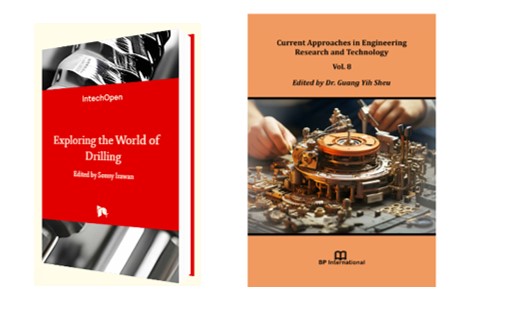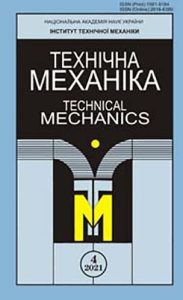Участь у міжнародних конференціях, семінарах, симпозіумах:
- Доповідь на міжнародному семінарі XXIXth International Seminar/Workshop on Direct and Inverse Problems оf Electromagnetic And Acoustic Wave Theory (DIPED-2024), 11-13 вересня 2024 р., м. Тбілісі, Грузія, зроблено доповідь “Measuring the Line Density of Plasma Electrons by Three-Probe Microwave Interferometry” (автори A. Doronin, N. Gorev, Kodzhespirova).
- Доповідь на XXIX Міжнародному конгресі двигунобудівників, 3-6 вересня 2024 р. Вихореутворення та низькочастотні коливання в рідинному ракетному двигуні під час течії газових продуктів згоряння в камері ( автори Ніколаєв О., Башлій І., Марчан Р).
Опубліковано більш ніж 10 статей в фахових виданнях і 2 розділа в колективних монографіях в закордонних видавництвах:
- Yu.О. Zhulay, O.D. Nikolayev. Sonic drilling with a cavitation hydraulic vibrator – theoretical computation of the energy performance and rate of penetration. Chapter of book Exploring the World of Drilling edited by Dr. Sonny Irawan. – London, United Kingdom. IntechOpen, 2024. – pp.1-28. http://dx.doi.org/10.5772/ IntechOpen .114564
- Pryadko N., Strelnikov H., Ternova K. Flow in Shortened Round Supersonic Nozzle with a Bell-shaped Tip. Chapter of book Current Approaches in Engineering Research and Technology Vol. 8, 5 October 2024 , Page 52-77. Editor(s) Dr. Guang Yih Sheu. Chang-Jung Christian University, Taiwan https://doi.org/10.9734/bpi/caert/v8/2095

Yu.О. Zhulay, O.D. Nikolayev.
Sonic drilling with a cavitation hydraulic vibrator – theoretical computation of the energy performance and rate of penetration.
A new approach to the numerical analysis of the dynamic rock interaction and the drill string structure for sonic well drilling by using a cavitation hydraulic vibrator is proposed. The approach is formulated on the basis of the developed mathematical model of the “drill string – rock” dynamic system. The parameters of mud oscillations and mechanical vibrations of the drilling tool, as well as oscillation power at contact interaction of the bit with the rock, were determined. It is possible to establish the resonant frequencies of drilling tool mechanical vibrations and the rock, necessary for an increase in penetration rate. The penetration rate was calculated in two ways: using the concept of hydraulic vibration power and drill vibration power. It has been established that the use of a drilling tool with a cavitation vibrator is more effective compared to other means of exciting the drilling tool vibration load. The intensification of the rock destruction process when drilling with a cavitation hydraulic vibrator is carried out due to an increase in the vibration energy transferred to the rock and a decrease in the energy intensity of the rock destruction process in resonant drilling modes.
Pryadko N., Strelnikov H., Ternova K.
Flow in Shortened Round Supersonic Nozzle with a Bell-shaped Tip
The present study aimed to generalize the study results of supersonic flows in a shortened nozzle with a bell-shaped tip and analyze the effect of the base nozzle length, different connection tip angles with the conical nozzle part, inlet and external pressure on the flow characteristics in the nozzle. The flow in a shortened nozzle with a bell-shaped nozzle is considered. A comparison of the wave structures of supersonic gas flow was carried out in shortened nozzles with short and long tips formed by compression and stretching of the original bell-shaped tip for connection with the long and short conical base nozzle part, respectively, and with the same nozzle length. The influence of connection angles of the conical nozzle part with the bell-shaped tip was analyzed. The flow characteristics were observed under operation conditions at sea level, in the upper atmosphere layers and different pressure values at the nozzle inlet. The calculation results correlated satisfactorily with the flow experimental study results.

